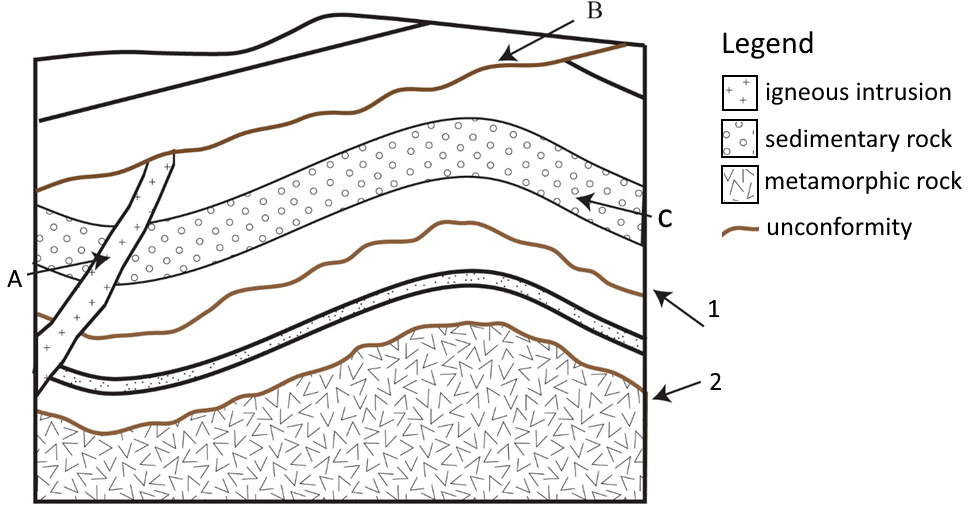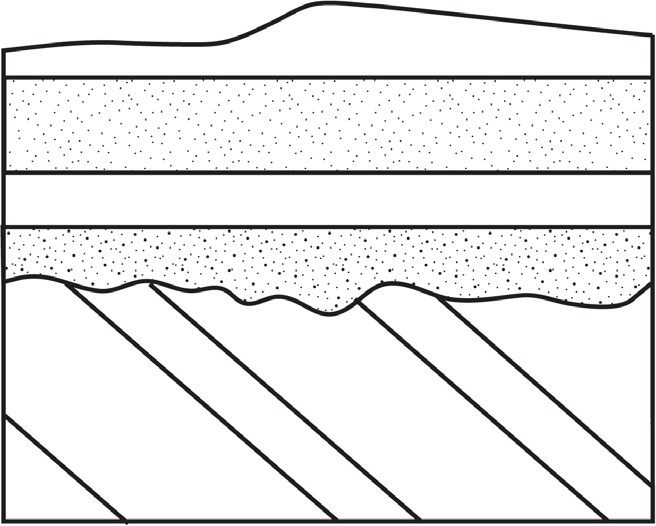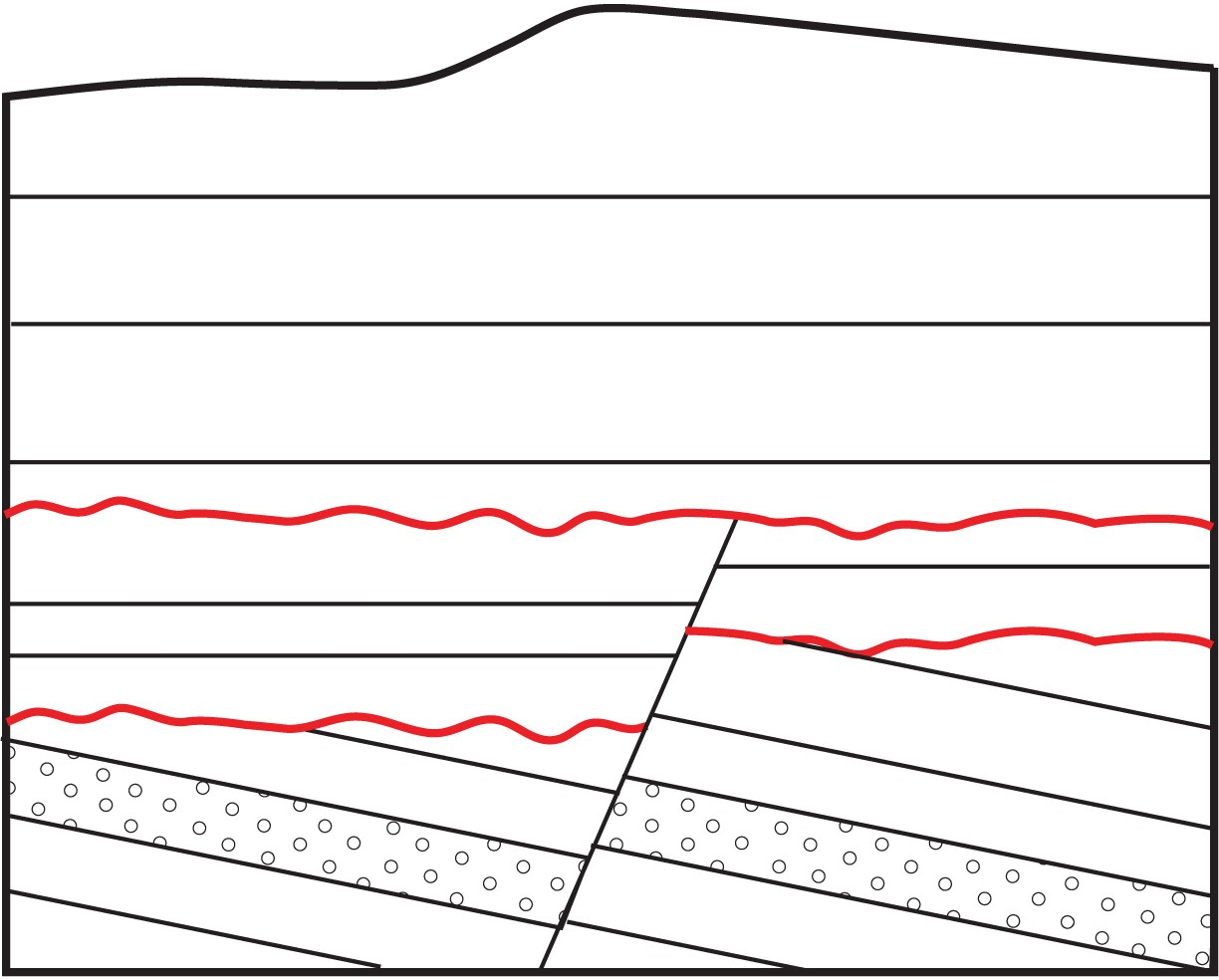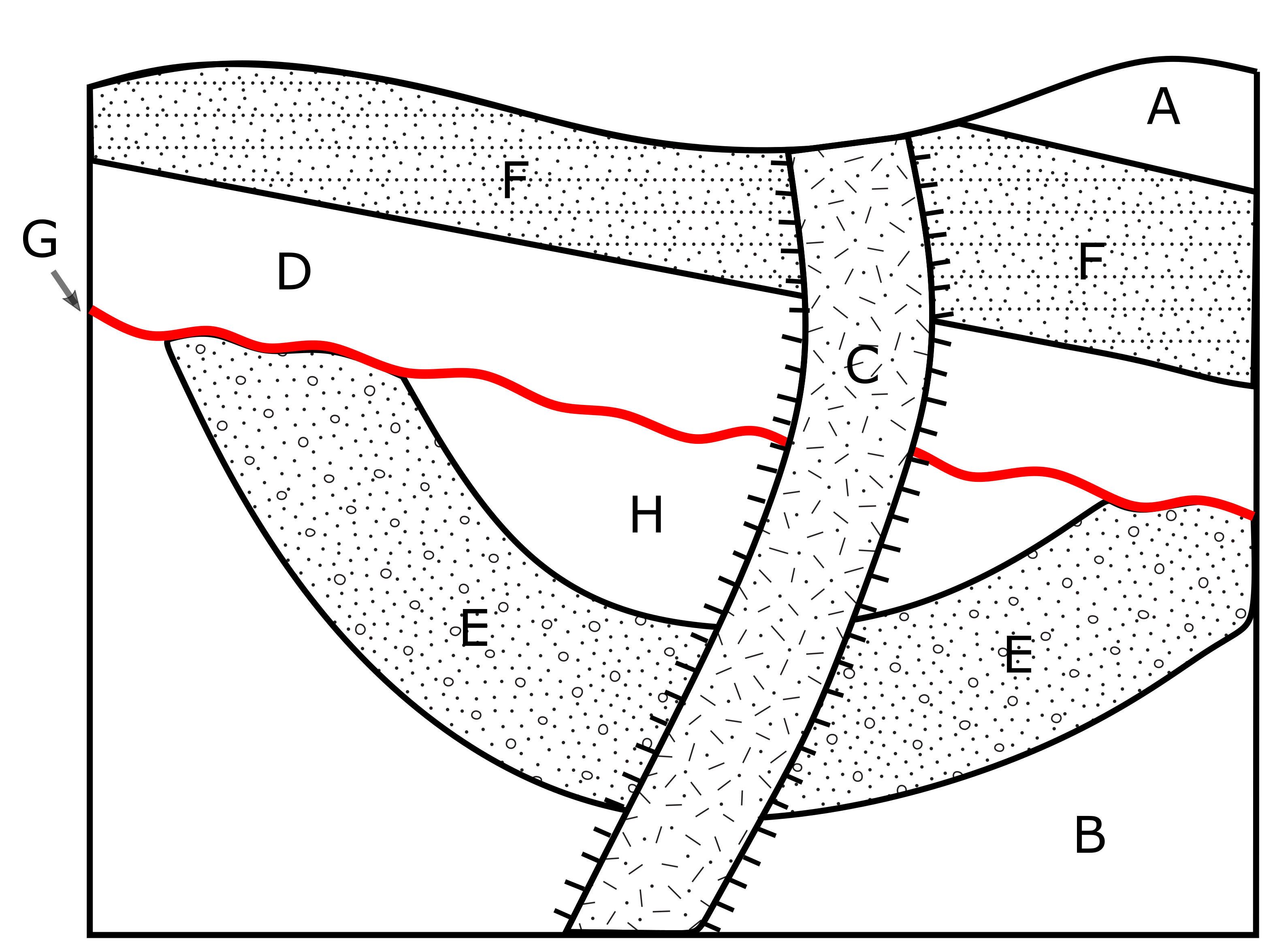Chapter 6. Relative and Absolute Dating
2 Exercises on Relative Dating
Adapted by Joyce M. McBeth & Sean W. Lacey (2018) University of Saskatchewan from Deline B, Harris R, & Tefend K. (2015) “Laboratory Manual for Introductory Geology”. First Edition. Chapter 1 “Relative and Absolute Dating” by Bradley Deline, CC BY-SA 4.0. View Source. Last edited: 14 July 2020
Note that portions of this lab will require students read through and refer to the “Overview of Relative and Absolute Dating” portion of the lab manual.
Name: _______________
NSID and student number: ____________
Date and lab section time: _____________
TAs’ names: _______________
Please hand in this lab to your TAs at the end of the lab.
6-E1 LAB EXERCISES – RELATIVE TIME
Relative time is an important tool for geologist to quickly construct a model for a series of geologic events, especially in the field. In the following section, apply what you have learned regarding relative time to the questions below.

Source: Bradley Deline (2015) CC BY-SA 3.0 view source
1. (1 pt) In Figure 6-E1, which of the following rock layers is the oldest?
a. A
b. B
c. C
2. (1 pt) Which geologic law or principle did you use to come to the conclusion you made in the previous question?
a. The law of superposition
b. The principle of cross-cutting relationships
c. The principle of original horizontality
d. The principle of unconformities

Source: Joyce M. McBeth (2019) CC BY-SA 4.0; modified from Bradley Deline (2015) CC BY-SA 3.0 view source
3. (1 pt) In Figure 6-E2, which of the following geologic structures is the youngest?
a. A
b. B
c. C
4. (1 pt) Which geologic law or principle did you use to come to the conclusion you made in the previous question?
a. The law of superposition
b. The principle of cross-cutting relationships
c. The principle of original horizontality
d. The principle of unconformities
e. b and d.
5. (1 pt) Examine unconformities 1 and 2 in Figure 6-E2. Which of the following statements about them is true?
a. The older unconformity is a nonconformity, while the younger is an angular unconformity.
b. The older unconformity is a disconformity, while the younger is a nonconformity.
c. The older unconformity is a nonconformity, while the younger is a disconformity.
d. The older unconformity is an angular unconformity, while the younger is a disconformity.
6. (1 pt) Examine the unconformity shown in Figure 6-E3. What type of unconformity is this?
a. Angular unconformity
b. Nonconformity
c. Disconformity

Source: Bradley Deline (2015) CC BY-SA 3.0 view source
To answer questions 7 and 8, examine Figure 6-E4. Note that all layers in this block diagram are composed of sedimentary rock and the unconformities are colored in red. Using Figure 6-E4, the geologic laws and principles discussed earlier, and following the examples shown in the overview section, identify the geologic events that occurred in this area.
7. (4 points) Number the sedimentary layers in order of deposition on the diagram below: from oldest (1) to youngest (13).

Source: Bradley Deline (2015) CC BY-SA 3.0 view source
8. (8 points) Place the geologic events (a-h) in the correct relative time sequence in the table below, in order from oldest (1) to youngest (8).
a. Tilting.
b. Uplift and erosion (angular unconformity).
c. Submergence and deposition of sedimentary layers 10-13.
d. Uplift and erosion to current position.
e. Submergence and deposition of sedimentary layers 7-9.
f. Uplift and erosion (disconformity)
g. Submergence and deposition of sedimentary layers 1-6.
h. Fault.
Event order:
![]()

Source: Joyce McBeth (2020) CC BY 4.0.
Examine Figure 6-E5. Note that all of the layers in this block diagram are composed of sedimentary rock except for unit “C”, and the unconformity is colored in red.
9. (7 pts) Using the geologic laws and principles discussed in this lab and that you have practiced in earlier lab questions, identify and list the geologic events that occurred in this area.
10. (3 pts) Place them in the correct time sequence from oldest to youngest event.
11. (8 pts) Using the key below, label the units and unconformity in Figure 6-E5 in order from oldest (1) to youngest (8).
![]()

